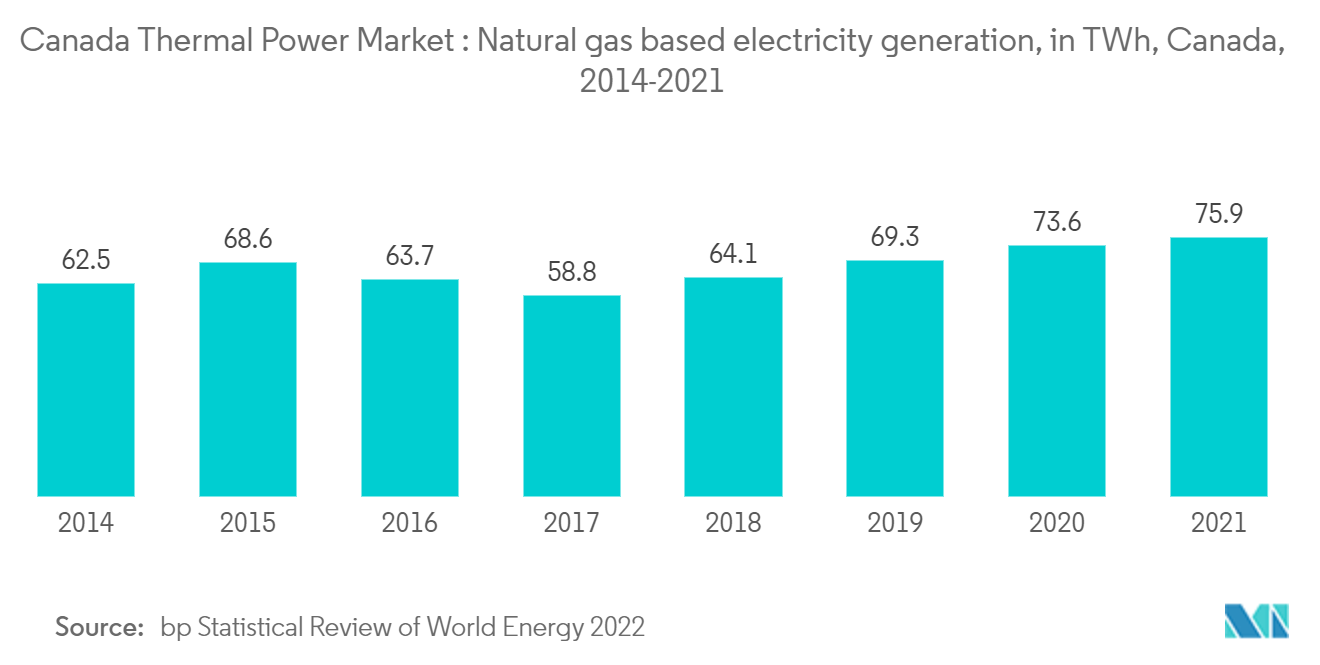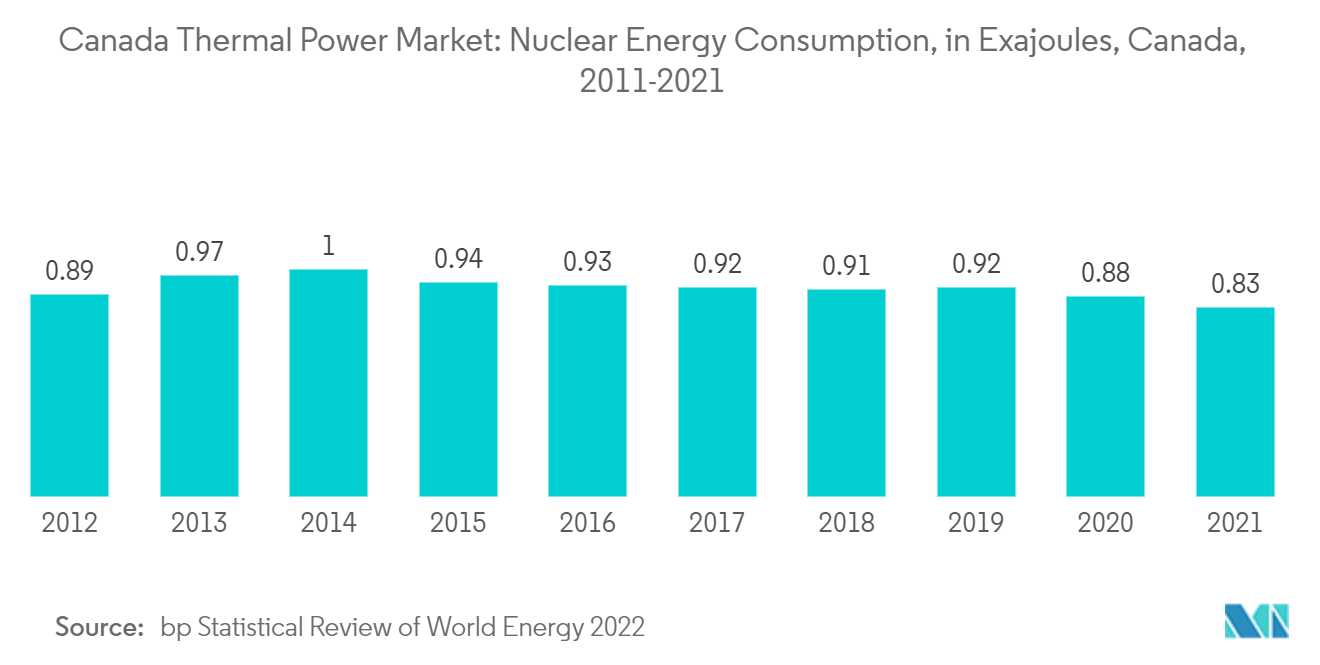Market Trends of Canada Thermal Power Industry
Natural Gas Based Thermal Power to Witness Significant Growth
- Natural gas combined-cycle plants are the most efficient among natural gas-fired power plants. They cost slightly less than gas turbine cycle plants in construction costs but can provide more energy by utilizing the heat released during the process.
- Thermal power generation made up a big part of Canada's power, and coal, gas, and nuclear power were the main sources.In 2021, natural gas generated more than 75.9 TWh of electricity, and its share is expected to grow further during the forecast period.
- Units 4 and 5 at Genesee Generating Station are being updated. They will use high-efficiency gas turbine technology and be able to make up to 1,060 megawatts of electricity.The project is expected to be completed by 2023 at a cost of USD 1.4 billion.
- In March 2022, the mining company Argonaut Gold Inc. announced that it had received a 22 MW engine power plant from Wärtsilä. The Magino Gold Mine in the province of Ontario will benefit from the power plant in Canada. It includes four gas engines, the Wärtsilä 34SG, electrical equipment, auxiliaries, and plant commissioning. The power plant will begin operation in 2023.
- With advantages like low emissions in comparison to coal and fewer harms in comparison to nuclear power, the market share of natural gas in power generation is likely to grow in the future at the highest rate.

Increasing Demand for Nuclear Generation to Drive the Market Growth
- Since power plants are getting older, more refurbishment projects are being done to make nuclear fleets last longer. This, in turn, is expected to drive the market's growth during the forecast period. Ontario's Darlington and Bruce atomic units are being refurbished, allowing the nuclear plants to operate well beyond the mid-century. The Darlington refurbishment project is expected to be completed by 2026 and the Bruce project by 2033.
- Canada has a lot of resources, a lot of experience, and a lot of knowledge, and it does a lot of research and development on nuclear energy so that it can be used to get rid of carbon from the energy system.New Brunswick and Ontario use atomic energy to generate low-emission electricity for their consumers. The country has a sound environment for nuclear energy development, which positions the thermal power market further than other low-carbon emitting technologies.
- In December 2019, the provinces of New Brunswick and Saskatchewan agreed to work with Ontario to speed up the development and deployment of SMRs to deal with climate change, energy demand in the region, economic growth, and research and innovation opportunities. As per the BP Statistical Review, the nuclear energy consumption in 2021 was projected to be 0.83 exajoules, a decrease of 5% from the previous year. Also, electricity production from nuclear energy production was 14.45% in 2021, making it the second most preferred energy resource after hydro.
- In 2022, NextGen Energy Limited, which was mostly focused on its largest uranium project in the development stage, Rook 1, planned to start making a lot more uranium on a large scale.With the development of Rook 1, 30 million pounds per year (Mlbpa) of uranium could be made.The total initial capital cost for Rook I is USD 1.3 billion.
- With programs to fix up old reactors and a big share of the power generation market, nuclear energy is expected to remain the most important source of energy during the forecast period.


